1950 Armed forces from communist North Korea smash into South Korea, setting off the Korean War. The United States, acting under the auspices of the United Nations, quickly sprang to the defense of South Korea and fought a bloody and frustrating war for the next three years.Korea, a former Japanese possession, had been divided into zones of occupation.Like in Germany, however, the "temporary" division soon became permanent. The Soviets assisted in the establishment of a communist regime in North Korea, while the United States became the main source of financial and military support for South Korea.On June 25, 1950, North Korean forces surprised the South Korean army (and the small U.S. force stationed in the country), and quickly headed toward the capital city of Seoul. The United States responded by pushing a resolution through the U.N.'s Security Council calling for military assistance to South Korea.

1950 In 1949, Frank X. McNamara thought of a way for customers to have just one credit card that they could use at multiple stores. McNamara discussed the idea with two colleagues and the three pooled some money and started a new company in 1950 which they called the Diners Club.The first Diners Club credit cards were given out in 1950 to 200 people (most were friends and acquaintances of McNamara) and accepted by 14 restaurants in New York. The concept of the card grew and by the end of 1950, 20,000 people were using the Diners Club credit card. The Diners Club credit card is considered the first modern credit card.

1950 When Schulz sold his first strip to the United Feature Syndicate in 1950, it was the Syndicate that changed the name from Li'l Folks to Peanuts - a name that Schulz himself never liked.The very first strip was four panels long and showed Charlie Brown walking by two other young children, Shermy and Patty. (Snoopy was also an early character in the strip, but he did not appear in the very first one.)
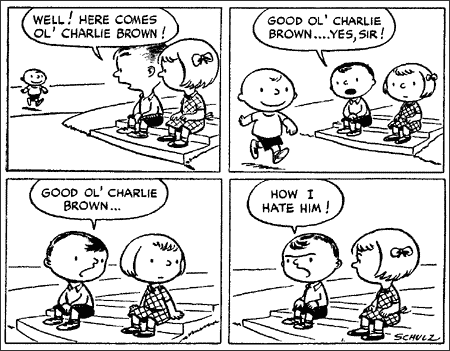
1950 First developed by the United States in the early 1950s, the hydrogen or thermonuclear bomb is perhaps a thousand times more powerful than a uranium- or plutonium-based fission bomb, making it effectively the nuclear weapon's nuclear weapon.Only the five permanent United Nations Security Council members — the United States, Russia, Britain, France and China — are known to possess hydrogen bombs.The difference between a hydrogen bomb and a regular uranium or plutonium bomb is that a hydrogen bomb uses fusion instead of fission to generate the main explosion.In a fission reaction, unstable isotopes of the heavy elements uranium and plutonium are split into smaller atoms, releasing a large amount of energy proportional to the amount of material used.In a fusion reaction, two atoms of the lightest element, hydrogen, fuse to create one atom of helium, the next-lightest element — and release much more energy.Since a nuclear explosion is one of the few proven methods for creating temperatures high enough for hydrogen nuclei to overcome their natural repulsion and fuse — about 50 million degrees — the detonation of regular plutonium- or uranium-based fission bombs is essential to ignite the process. Hence, a hydrogen bomb is really a composite weapon.

1950 On November 14, 1908, Joseph McCarthy was born into a Roman Catholic family as the fifth of nine children in Appleton, Wisconsin. Although McCarthy dropped out of grade school at the age fourteen, he returned to diligently finish his studies in 1928, permitting him to attend Marquette University. Once accepted, he began his journey to become what many historians consider to be one of the least qualified, most corrupt politicians of his time. After receiving his law diploma at Marquette University, McCarthy dabbled in unsuccessful law practices, and indulged in gambling along the way for extra financing. Despite being a Democrat early in his political years, he quickly switched into the Republican Party after being overlooked as a candidate in the Democratic Party for district attorney. His dirty campaign to win the position as circuit court judge proved to be an ominous foreshadowing to his later era of “McCarthyism.”To stimulate his political career, McCarthy quit his job as circuit court judge and joined the Marines during World War II. After his short military career McCarthy then ran as the Republican candidate for the Wisconsin Senate seat, where he used propaganda and erroneous accusations against his opponent, Robert La Follette, to promote his own campaign. Damaging La Follete’s reputation by claiming he hadn’t enlisted in the military during the war, McCarthy won the election and became Senator.As re-election began to loom closer, McCarthy, whose first term was unimpressive, searched for ways to ensure his political success, resorting even to corruption. Edmund Walsh, a close fellow Roman Catholic and anti-communist suggested a crusade against so-called communist subversives. McCarthy enthusiastically agreed and took advantage of the nation’s wave of fanatic terror against communism, and emerged on February 9, 1950, claiming he had a list of 205 people in the State Department who were known members of the American Communist Party. The American public went crazy with the thought of seditious communists living within the United States, and roared for the investigation of the underground agitators. These people on the list were in fact not all communists; some had proven merely to be alcoholics or sexual deviants. Regardless, McCarthy relentlessly pushed through and became the chairman of the Government Committee on Operations of the Senate, widening his scope to “investigate” dissenters. He continued to investigate for over two years, relentlessly questioning numerous government departments and the panic arising from the witch-hunts and fear of communism became know as McCarthyism.

1951 On June 25, 1951, CBS broadcast the very first commercial color TV program. Unfortunately, nearly no one could watch it on their black-and-white televisions.One of the great technical challenges of introducing color broadcast television was the desire to conserve bandwidth, potentially three times that of the existing black-and-white standards, and not use an excessive amount of radio spectrum. In the United States, after considerable research, the National Television Systems Committee approved an all-electronic system developed by RCA which encoded the color information separately from the brightness information and greatly reduced the resolution of the color information in order to conserve bandwidth. The brightness image remained compatible with existing black-and-white television sets at slightly reduced resolution, while color televisions could decode the extra information in the signal and produce a limited-resolution color display. The higher resolution black-and-white and lower resolution color images combine in the eye to produce a seemingly high-resolution color image. The NTSC standard represented a major technical achievement.
1951 The political and legal system of Apartheid in South Africa enforced a regime of racial oppression and segregation from its inception in the mid 1900's until the democratic election of 1994. Apartheid forced thousands of black South Africans to migrate to 'black homelands', losing their livelihoods or jobs in the process. From 1990-1994 the Black Homeland state of KwaZulu-Natal was embroiled in a surge of political violence as the first democratic election for South Africa was arriving. The violence swept through the area on numerous occasions and took thousands of lives as fighting between the rival parties of Inkatha, United Defense Front (UDF), and African National Congress (ANC) broke out in the cities and townships. Below the political motivations for and against racial injustice, sovereignty and power lay the fact that after 30 years of Apartheid the land of KwaZulu-Natal was severely degraded due to land erosion and mismanagement. This case study will analyze how the deteriorating environmental landscape could have contributed to the political violence that engulfed the area for four years.
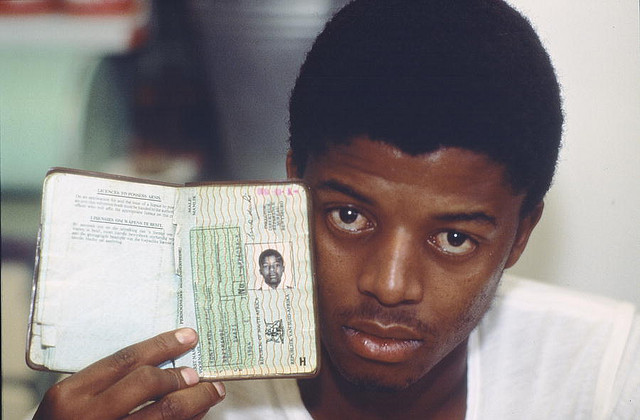
1953 Marilyn Monroe becomes a famous actress after the film “Niagara” comes out in 1953. She was at the top of Hollywood’s A-list and in January of 1954 she married baseball great Joe DiMaggio. Joe became uncomfortable with his wife’s image and popularity and ended getting a divorce after nine months. After the divorce, Marilyn tried to take on serious roles and studied at the Actor’s Studio in New York. She released films with a “serious role” such as Bus Stop, The Prince and the Showgirl, and Some Like It Hot. By 1961 Marilyn began to have emotional breakdowns after her third marriage and was admitted to hospitals for psychiatric observation twice. Her last film was “The Misfits” in 1961 after being fired by Fox for absence on movie sets. On August 5th, 1962 Marilyn was found dead in her house from an overdose of drugs at the age of 36.
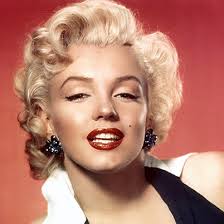
1954- The Landmark case Brown v. Board of Education of Topeka was about School segregation. United States Supreme Court had to make a landmark decision declaring state laws establishing public schools for black and white students unconstitutional. This first began controversy when a young girl name Linda Brown was turned down from being enrolled in a “white school” because she was African American. Other parents were dealing with the same situation and they filed lawsuits against the Topeka Board of Education. Many African American children and parents felt they did not have the same education the “white schools” were being taught because of their race. After Linda’s father Olivia Brown (the case was Brown v. Board of Education because Oliver Brown was first on the list of lawsuits) was turned down from the state court, the case was taken to the Supreme court. The same case was being held in many other states and they joined as one to fight for their rights. The lawyers of parents and the Board of Education argued for three days and the Supreme court talked it over for seven months. After three years of the case, the Supreme Court thought it was not fair to separate white and black children in different schools and both white and black children had the same education without being separated.
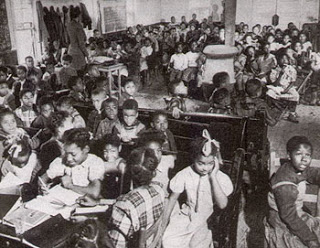
1954- The Vietnam War was a devastating war for world history. The war began in 1954 after the rise of Ho Chi Minh leader of North Vietnam fighting against South Vietnam and the United States. More than 3 million people including 58,000 Americans were killed in the Vietnam War and half were Vietnamese civilians. During the Cold War, the United States wanted to end communism and Ho Chi Minh was spreading communism to Vietnam, already beginning to take over North Vietnam. The United States thought Communism would become known with Americans and start affecting the government. By 1969, 500, 000 military soldiers were involved with the Vietnam Conflict. The war lead to anti-war protest in America, leading to President Nixon to bring back U.S forces in 1973. In 1975 communist forces gained control of Saigon ending the War and Vietnam was unified as the Socialist Republic of Vietnam the next year.
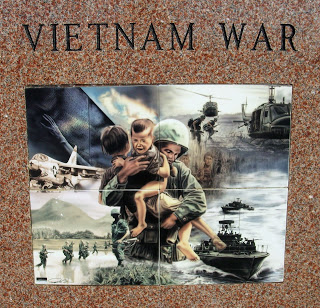
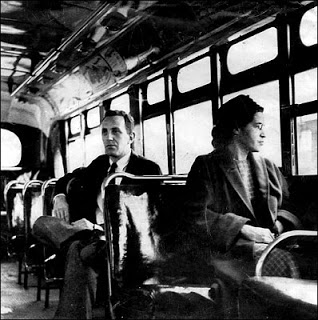
1955- On December 1st , 1955 Rosa Parks refused to give up her seat on a bus in Montgomery, Alabama leading to a Supreme Court decision outlawing bus segregation. Rosa Parks boards a city bus in the middle of the bus because there isn’t a white person standing. Along the route, all the “white” seats are taken and a “white” passenger just climbs aboard, and the bus driver asks Rosa to move to the back where there are no seats and has to stand. The other passengers and Rosa don’t budge at the first time, but on the second they move except Rosa. Rosa tired of how she has been treated and eventually gets arrested for violation segregation rules. “Black” leaders start boycotting all city buses, and Martin Luther King is chosen to lead the boycott. Protest begins and Rosa Parks is found guilty and her lawyer states he will bring the case to the Supreme Court. The case leads to an uprising of segregated citizens and on November 13th, 1956 the Supreme Court rules that Montgomery’s segregation laws are unconstitutional.

1955 In 1955, the felt-pen was introduced. It was first made in England. It is made out of felt. There is nothing really interesting about this pen. Except, it costs $2000.
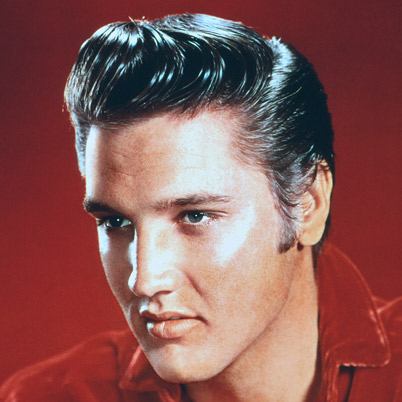
1956 - In 1956 the Ayatola of Rock n Rolla was born. Well, not exactly born but his music career was. Elvis Presley ,singing legend became a world famous star. It was because of his Love Me Tender film. A great film it was. One of my favorites.

1956- The first IBM hard drive was created. What a historical achievement. One computer chip for a computer. One giant leap for technology.
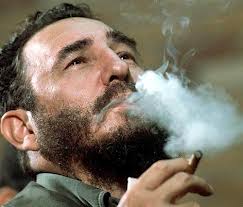
1959- Fidel Castro takes control of Cuba. He becomes a dictator. A person who's word is basically law. He terrorizes the people of Cuba. Holding them by a chain and starting their decline. One they still haven't really recovered from.

1959- IM A BARBIE GIRL IN A BARBIE WOOOOOOORLD. Well blame this horrid song on 1959. They made the barbies. So guess what kids. Your grandparents were a barbie girl too!

1951- The miss world competition is made. Girls all over the world will compete for the crown. It is basically the adult version of a beauty pageant. Hopefully Honey Boo Boo never wins it.